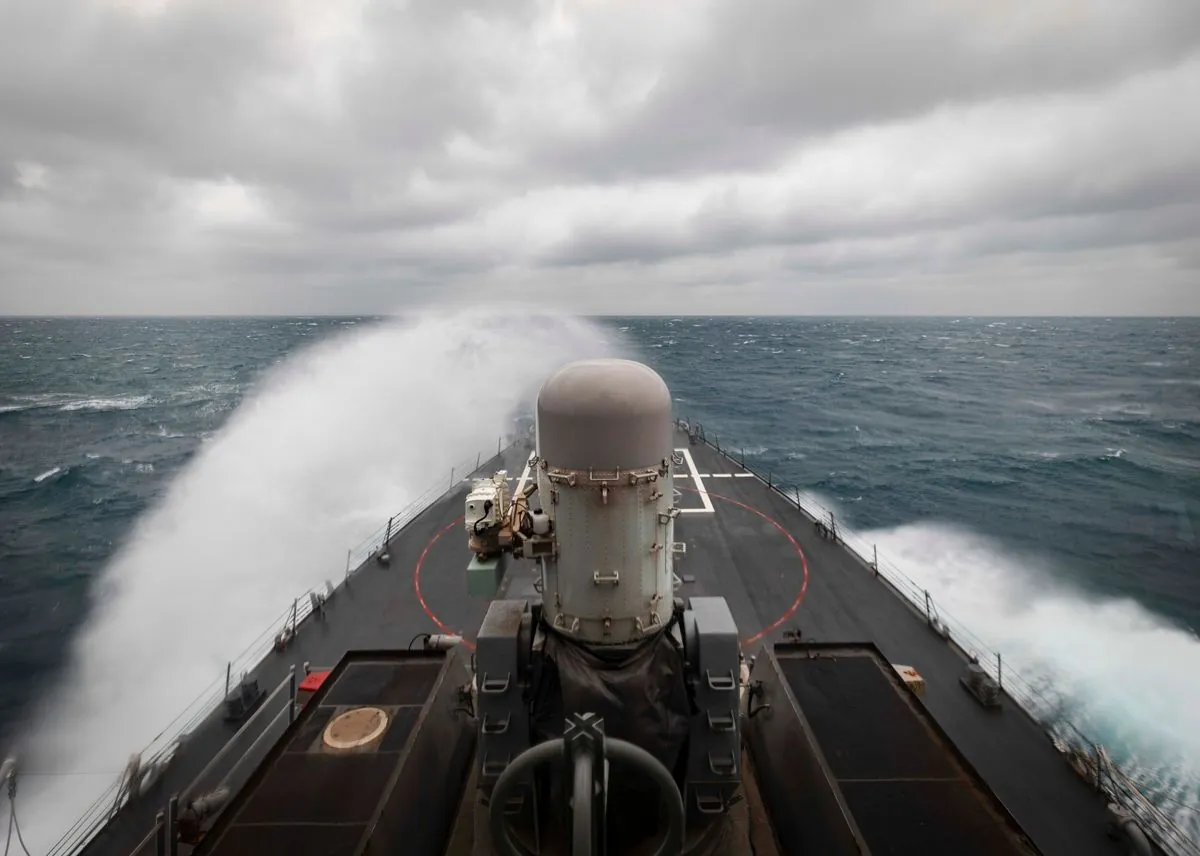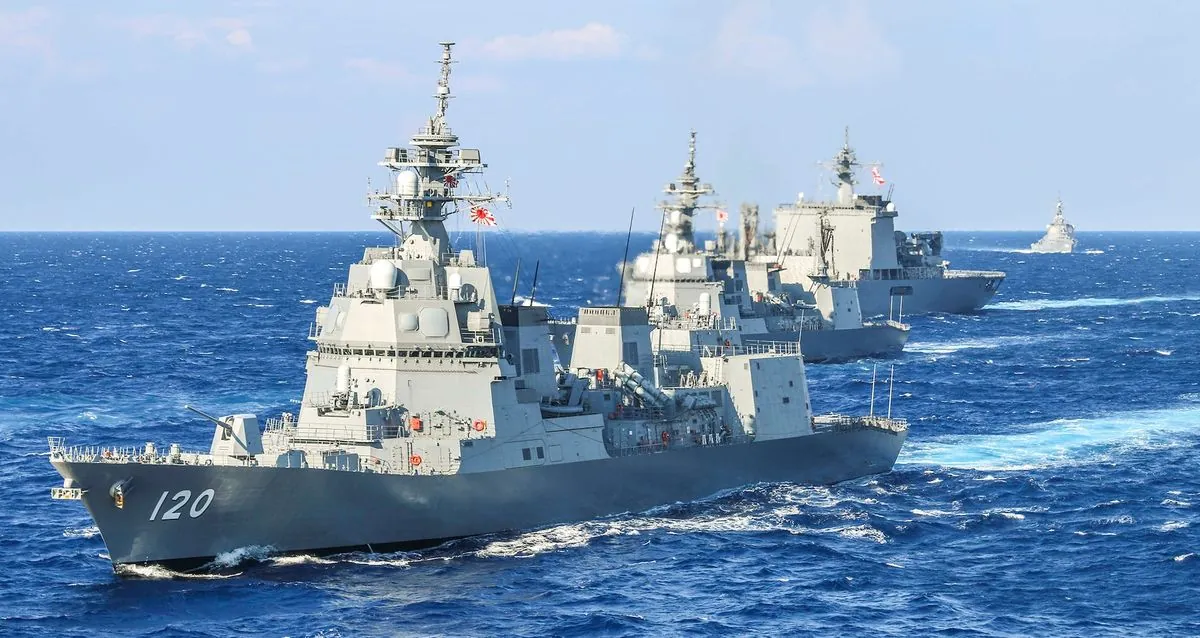Japan's First Taiwan Strait Patrol Signals Regional Security Shift
Japan's Self Defense Force conducted its inaugural patrol of the Taiwan Strait, collaborating with Australian and New Zealand naval vessels. This move comes amid escalating regional tensions and China's recent missile test.

In a significant development, Japan's Self Defense Force (SDF) has conducted its first-ever patrol of the Taiwan Strait, a 180-kilometer-wide waterway separating Taiwan from mainland China. This action, reported by the Yomiuri Shimbun, Japan's largest newspaper by circulation, marks a notable shift in regional security dynamics.
The SDF destroyer Sazanami, a Takanami-class vessel commissioned in 2004, traversed the strait on September 27, 2023. The ship spent over 10 hours navigating southward through these strategic waters, which see approximately 30% of global container traffic. This patrol was not conducted in isolation; naval ships from Australia and New Zealand, both members of the Five Eyes intelligence alliance, participated in the coordinated effort.
Japan's decision to patrol the Taiwan Strait comes against a backdrop of increasing Chinese military activity in the region. The SDF, established in 1954, has been constrained by Japan's pacifist constitution, which limits its military to self-defense roles. However, recent years have seen a shift in Japan's defense posture.
Prime Minister Fumio Kishida has called for a "substantial increase" in the country's defense capabilities. This is reflected in Japan's defense budget for 2023, set to be the largest ever at around 6.8 trillion yen. This buildup is partly in response to China's growing naval presence, as the People's Liberation Army Navy (PLAN) now boasts the world's largest fleet by number of ships.

The timing of this patrol is particularly noteworthy. On the same day, China reported a successful launch of an intercontinental ballistic missile (ICBM) into the Pacific Ocean. ICBMs, with a minimum range of 5,500 kilometers, represent a significant strategic capability.
This naval maneuver also follows recent actions by the 'Quad' grouping, comprising Australia, India, Japan, and the United States. Initiated in 2007 and revived in 2017, the Quad has expanded its joint security measures in Asian waters, driven by shared concerns about China's assertiveness.
The Taiwan Strait has long been a focal point of regional tensions. China claims Taiwan as its territory and has not ruled out the use of force to bring it under its control. The United States, bound by the Taiwan Relations Act, is committed to providing Taiwan with defensive capabilities.
Japan's engagement in the Taiwan Strait reflects its expanding security partnerships beyond its alliance with the United States. This shift is evident in the increasing frequency of joint military exercises involving Australia, Japan, and the United States.
While an SDF official declined to comment on the patrol, the action sends a clear message about Japan's evolving role in regional security. As tensions persist, with ongoing territorial disputes in the East China Sea over the Senkaku Islands, and China's military budget for 2023 set at 1.55 trillion yuan (a 7.2% increase), the geopolitical landscape of East Asia continues to evolve.
This inaugural patrol by Japan, in concert with its allies, signifies a new chapter in the complex interplay of power and security in the Asia-Pacific region. As nations adapt to changing dynamics, the international community watches closely, aware of the potential implications for global stability.


































